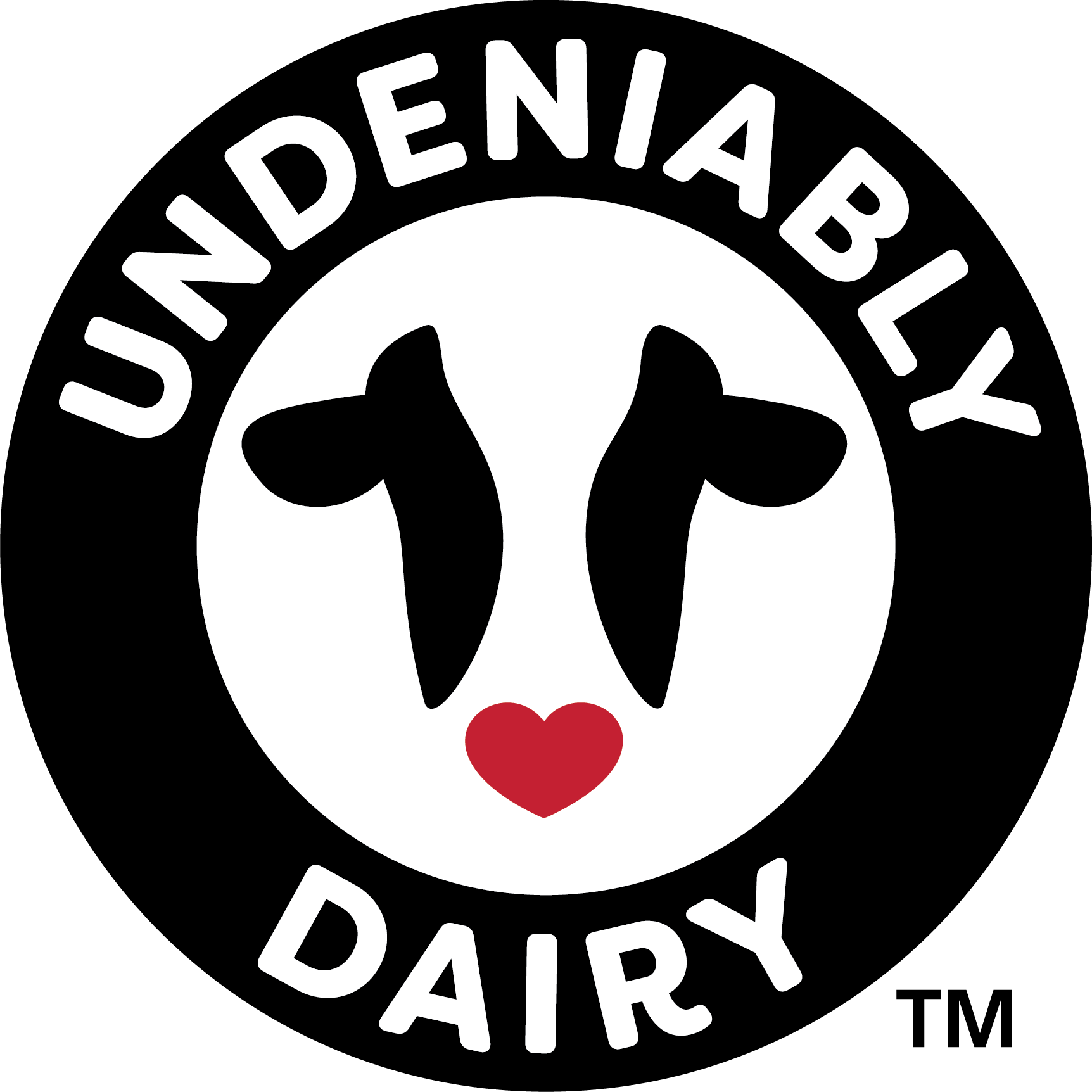Are you working in your three servings of dairy each day? Registered Dietitian and Chef Amber Pankonin sets the record straight around common questions you may have about dairy and why it’s an important part of a healthy diet. Below are common dairy myths (with the truth and answers)!
5 Common Myths about Dairy
1. Myth: Dairy foods are easily replaceable.
As a Registered Dietitian and Chef, I am often asked about replacing milk or dairy foods with other foods like leafy greens and plant-based alternatives. The reality is the unique nutrient package of milk makes it challenging to substitute from both a nutrition and culinary perspective. It is nutrient rich providing 13 essential nutrients including high-quality protein. In fact, it is the number one food source of 3 of the 4 under consumed nutrients of public health concern identified by the Dietary Guidelines for Americans which are calcium, vitamin D, and potassium. And as a Chef, I prefer to use dairy as it produces quality results when I’m making sauces, building charcuterie boards, or making desserts that need the quality and consistency that only dairy provides.
2. Myth: Dairy foods are not needed for health.
Dairy consumption is associated with reducing the risk of some of the most prevalent chronic diseases in the U.S. and around the world including heart disease, type 2 diabetes, and high blood pressure. The nutrients contributed to the diet by milk, cheese, and yogurt, including calcium, potassium, and protein, may help in blood pressure management. The protein dairy provides can help increase satiety and preserve muscle mass, which can help reduce overall calorie intake.
By supporting muscle growth and repair, protein can help improve athletic performance and increase overall physical activity levels, which can help with weight management. Adequate intakes of calcium, vitamin D, and high-quality protein may help reduce stress fractures, which are a common injury seen in athletes with weak bones.
 3. Myth: Lactose intolerance means avoiding all sources of dairy.
3. Myth: Lactose intolerance means avoiding all sources of dairy.
Many people think if you have a lactose intolerance you need to avoid dairy completely. That is not true. Lactose intolerance is characterized by a number of symptoms, which could include abdominal pain, bloating, flatulence, and/or diarrhea. Lactose intolerance is a very individual condition, which means people are able to tolerate different amounts of lactose. You don’t have to miss out on the great taste and health benefits of dairy foods, because there are many options available with varying amounts of lactose, even lactose-free options.
Aged cheeses such as cheddar, parmesan, and swiss naturally contain less lactose than fresher cheeses like mozzarella and ricotta. If you’re unsure how much dairy you can tolerate, start with small amounts and gradually increase as tolerated. Consuming dairy with other foods can also help slow down digestion and make it easier to tolerate. For example, pairing cheese with whole-grain crackers or having a milk-based smoothie with protein powder can help slow down the absorption of lactose.
4. Myth: Animal care is not a priority in the dairy industry.
Over the last 10 years, I have toured a number of dairy farms across the country and I’ve seen how dairy farmers care about the health of their cows. Dairy farmers carefully monitor their cow’s diet to ensure they are receiving a balanced diet with the right amount of nutrients. This may involve feeding a combination of grains and grasses as well as supplements when needed. Dairy farmers monitor their animals for signs of illness or injury and work with veterinarians to keep them healthy. Strict regulations and testing protocols ensure you can be confident there are no added hormones or antibiotics in the milk you drink.
5. Myth: Dairy isn’t a solution for environmental concerns.
Did you know that 94 percent of dairy farms are family-owned? Dairy farm families take pride in how they care for their cows and land to ensure it can be passed on for generations to come. Thanks to innovative dairy farming practices, the environmental impact of producing a gallon of milk in 2017 shrunk significantly, requiring 30% less water, 21% less land, and a 19% smaller carbon footprint than it did in 2007. Dairy cows are the ultimate upcyclers, keeping 306 million pounds of food waste out of landfills each day.
One major co-product of milking cows is manure, which is a valuable resource. Farmers use manure as a natural fertilizer for their crops. Cow manure is a natural source of nitrogen and phosphorus, which are key nutrients for plant health.
Contrary to commonly believed myths, dairy can be an important part of a healthy and balanced diet, providing a wide range of essential nutrients that are difficult to obtain from other sources. By separating fact from fiction and staying informed about the practices of dairy farmers, you can make informed decisions about how dairy fits into your overall health and wellness goals.
Connect with Undeniably Dairy
 Amber Pankonin MS RD LMNT CEC
Amber Pankonin MS RD LMNT CEC
Amber Pankonin is an award-winning nutrition educator, recipe developer, and Certified Executive Chef at Great Plains Culinary Institute at Southeast Community College in Lincoln, NE. You can find her recipes at Stirlist.com.


















